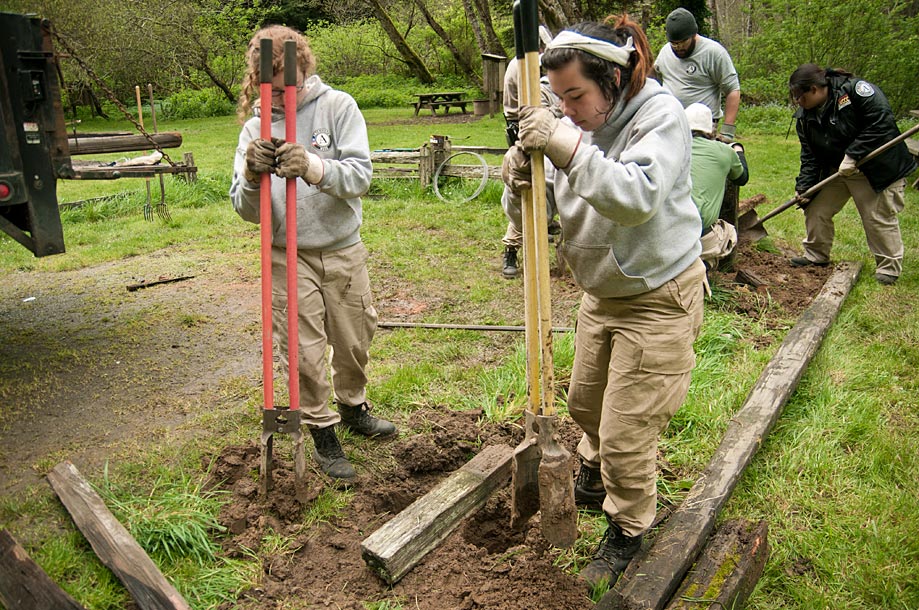Working with California State Parks
/Sarah Gadomski stencils "DPR" (Department of Parks and Recreation) on tables in a building in Russian Gulch State Park near Mendocino, CA. California State Parks recently acquired multiple tables and chairs and assigned us to "brand" them using black paint.
Unopened boxes of tables and chairs purchased by Cal State Parks.
Alyssa Pun stencils "DPR" on a number of chairs.
In another assignment from Cal State Parks, NCCC Corps Members repaired old fencing in Van Damme State Park, just south of Mendocino, CA. The fencing was installed around campsites in the state parks and by the park's entrance in the 1940s and 1950s. The wood used was from old growth redwoods that were cut down earlier in the century. The fences had deteriorated over time and to repair them, we used other old growth redwoods posts that had been sitting around since the mid 1900s. The wood is naturally resilient to weathering, making it a choice wood for fencing.
NCCC Corps Members continue to repair redwood fencing in Van Damme State Park.

















































